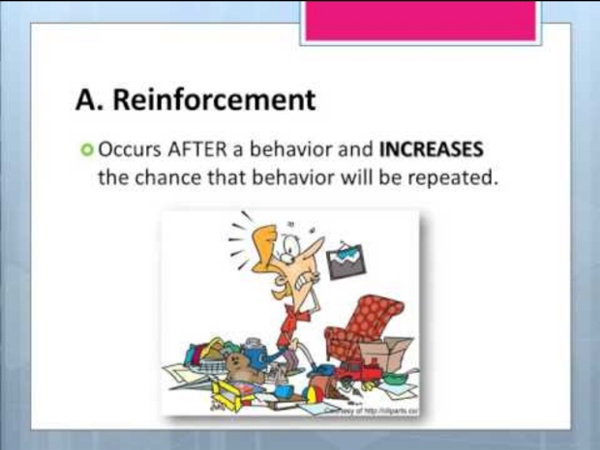



http://www.youtube.com/watch?v=IJ0gbkzmB-4
Related: PSY108: Reinforcement & Punishment strategies to promote road safety in Singapore. • Reinforcement and Punishment on Teenagers: A Guide for Parents • How Reinforcement And Punishment Can Help Parents In Influencing The Behavior Of Teenage Children • Parents' Guide to Influence Teenager's Behaviour - Reinforcement & Punishment • The use of Reinforcements and Punishments to influence your teenage child's behaviourRoad accident statistics in Singapore 2020 Last Updated: January, 2020. Latest available data from May, 2019. Highlights There were 7,690 road accidents involving injuries in 2018120 people were killed in traffic accidents in 2018Elderly pedestrians accounted for two-thirds of all pedestrian fatalities. (1 in 2 accidents involving elderly pedestrians was due to jaywalking)Motorcyclists and pillion riders account for about 1 in 2 of overall road fatalities73% of heavy vehicle drivers speed when traffic is lightSingapore’s road fatality rate of 2.73 per 100,000 citizens is higher than London, Hong Kong and Tokyo. Deaths per 100,000 people The Study of Punishment in Psychology Punishment is a term used in operant conditioning to refer to any change that occurs after a behavior that reduces the likelihood that that behavior will occur again in the future. While positive and negative reinforcements are used to increase behaviors, punishment is focused on reducing or eliminating unwanted behaviors. Punishment is often mistakenly confused with negative reinforcement. The difference: Reinforcement increases the chances that a behavior will occur and punishment decreases the chances that a behavior will occur. Types of Punishment
Reinforcement and Punishment Learning Objectives Explain the difference between reinforcement and punishment (including positive and negative reinforcement and positive and negative punishment)Define shapingDifferentiate between primary and secondary reinforcers In discussing operant conditioning, we use several everyday words—positive, negative, reinforcement, and punishment—in a specialized manner. In operant conditioning, positive and negative do not mean good and bad. Instead, positive means you are adding something, and negative means you are taking something away.
Discipline for Teens: Strategies and Challenges When your child becomes a teenager, your parenting role is likely to shift. You may find yourself becoming more of a guide, rather than an enforcer. That’s not to say your child won’t need you to intervene when there are safety issues or that your teen won’t need consequences. 4 Proven Behavior Modification Techniques with Examples Behavior modification is a means of changing behavior through various techniques used to replace undesirable behaviors with desirable ones. Behavior modification techniques have been used to treat both adults and children for various problems, such as enuresis (bedwetting), separation and general anxiety, various phobias, obsessive-compulsive disorder (OCD), etc. The methods use vary, but usually involve some form of positive or negative reinforcement. This concept had its beginning in 1938, when B. F.
Traffic Offences in Singapore: Demerit Points & Composition Fines (2020 Update) (Photo Credit: Singapore Police Force) Updated: 25 August 2020 Here is the full list of traffic offences that carry demerit points and composition fines in Singapore. Known as the Driver Improvement Points System (DIPS), it was implemented by the Traffic Police in 1983. Under DIPS, any driver who accumulates 24 demerit points within 24 months will be suspended from driving.
What Is Punishment Psychology, And Should You Use It? Updated February 01, 2021 Medically Reviewed By: Tanya Harell Source: rawpixel.com We were all punished when we were younger at one time or another. Using Positive Reinforcement to Improve Behavior When your child misbehaves, rewards might be the last thing on your mind. But, positive reinforcement can be one of the most effective behavior modification techniques.1 You can use positive reinforcement to encourage prosocial behaviors, like sharing or following directions. And, you can use it to prevent misbehavior, like hitting and rule violations. Positive reinforcement can also be an effective way to encourage and motivate your child to be responsible, do their chores, get along with their siblings, or complete their homework assignments without arguing.
Positive vs Negative Punishment - Psychestudy Punishment is a fundamental concept of Operant Conditioning, whose major objective is to decrease the rate of certain undesired behavior from occurring again. Punishment can be further classified into two major parts These two different types of punishment have got both similarities and differences, as the major purpose of both these punishment types is to decrease the rate of certain undesired behavior. Positive Vs Negative Reinforcement Reinforcement is a fundamental concept of Operant Conditioning, whose major objective is to increase the rate of certain undesired behavior from occurring again. Reinforcement can be further classified into two major parts The major purpose of both these reinforcement types is to increase the rate of certain behavior although they have many similarities and differences. By introducing the concept of reinforcement to an individual, the individual gets encouraged to perform the behavior in a repeated manner
Certificate of Merit. What is it? And how can you get one? Getting a driver’s licence ensures that you are qualified to drive. But along with that comes the responsibility of making sure you drive safely, not just for your sake but also for the sake of other road users. To ensure that drivers are aware of this and keep safety uppermost on their minds while driving, the Traffic Police has instituted a system of rewards and punishments. In March 1983, the Traffic Police introduced the Driver Improvement Points System (DIPS). How does the Driver Improvement System work?
Reinforcement and Punishment Learning Objectives Explain the difference between reinforcement and punishment (including positive and negative reinforcement and positive and negative punishment)Define shapingDifferentiate between primary and secondary reinforcers In discussing operant conditioning, we use several everyday words—positive, negative, reinforcement, and punishment—in a specialized manner. Negative Reinforcement and Operant Conditioning Negative reinforcement is a term described by B. F. Skinner in his theory of operant conditioning. In negative reinforcement, a response or behavior is strengthened by stopping, removing, or avoiding a negative outcome or aversive stimulus.1
This brief video clip helps to explain the concepts of reinforcement and punishment. by ahmadsholaahuddin Mar 28